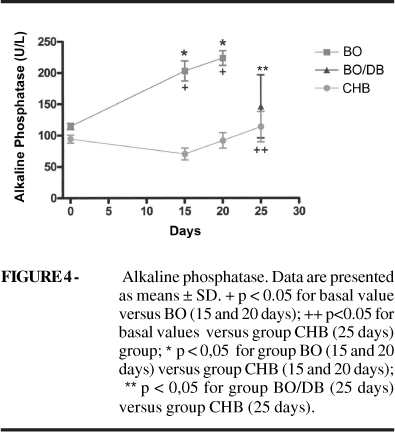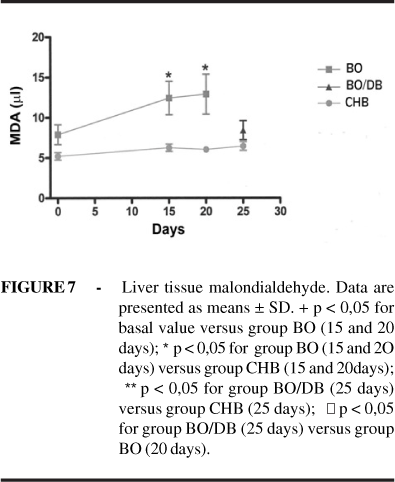PURPOSE: To evaluate liver alterations caused by biliary obstruction and drainage. METHODS: Thirty-nine male Wistar rats were randomly distributed in 4 groups: BO (n=18) bile duct ligation for 20 days, with a periodic evaluation of liver histological alterations, Doppler echography portal flow and measurements of NO and malondialdehyde (MDA); BO/DB (n=13) bile duct occlusion for 20 days followed by biliary drainage by choledochoduodenal anastomosis, 5 days follow-up, same BO group parameters evaluations; group CED (n=4) sham operation and portal flow evaluation trough 20 days; CHB (n=4) sham operation, with hepatic biopsy on 25th day and followed-up trough 25 days, by the same parameters of group BO, with exception of portal flow. Direct bilirubin (DB) and alkaline phosphatase (AP) were evaluated in the group BO, BO/DB and CHB. RESULTS: The bile duct ligation led to an increase of DB and AP, development of liver histological alterations, reduction of portal flow and increase of plasmatic NO and of MDA levels. The bile duct clearing resulted in a reduction of DB, AP, NO, MDA histological alterations and increase of portal flow. CONCLUSION: The biliary occlusion resulted in cholestasis and portal flow reduction, besides the increase of plasmatic NO and of hepatic MDA levels, and histological liver alterations, with a tendency of normalization after the bile duct clearing.
Liver; Portal Flow; Nitric Oxide; Biliary Obstruction; Cholestasis; Lipid Peroxidation; Malondialdehyde








